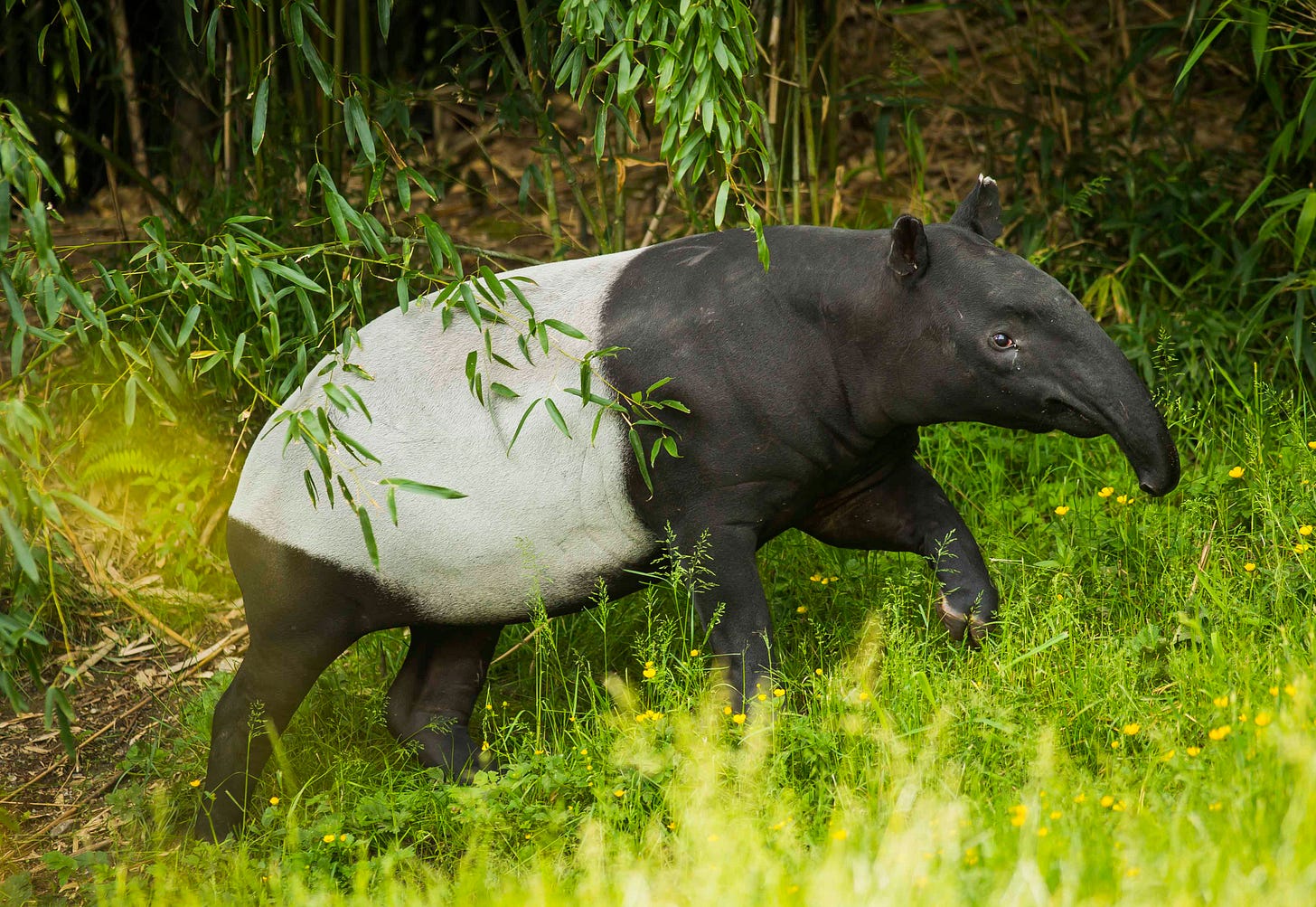Li'l Tapir Uma Says "Hello World!"
New zoo baby is learning about her surroundings, one sniff at a time
On February 2nd the Point Defiance Zoo & Aquarium in Tacoma, Washington welcomed a new tapir calf. Born to mother Yuna (after a 13-14 month gestation period!) and father Baku, baby Ume is only the second Malayan tapir calf ever born at the Zoo in their 120-year history. Yuna and Baku’s first calf, a male, was born in 2019; he was relocated to Fresno Chaffee Zoo in California last year to be paired with a mate relocated from the Woodland park Zoo as part of the Malayan Tapir Species Survival Plan.
Ume and Yuna are doing well behind the scenes, the baby’s first public appearance not yet scheduled. Much like my kitties, Ume enjoys butt skritches and napping in comfy spots. She’s also learning to use her little trunk for sniffing, exploring and grasping small objects. As I learned from the zoo’s social media “their trunks are an extended upper lip and nose, which helps them sense their surroundings and forage for food as they grow.” A lover of water, a tapir will even use its trunk as a snorkel while diving, although I don’t think Uma has been introduced to water yet beyond a splash in her water dish.
Ume is still nursing, but the zoo announced just last week that she’s growing her first tooth and has started mouthing at new food. Soon she’ll be eating hay, grasses and fruit like her mom, although she’ll also likely continue nursing as well for a while since Malayan tapirs typically wean at six to eight months old. Sometime between four to seven months, she’ll lose her spotted coat and grow into her adult coloration; black with a light-colored patch that extends from her shoulder to hindquarters. This coloration helps camouflage the Malayan tapir in the wild, as the light patch breaks up the animal’s appearance and looks like a rock to predators while the tapir is stationary.
Malayan tapirs are classified as endangered. There are only about 2,500 mature Malayan tapirs left in the wild. Their habitat in their native Southeast Asia is being lost to deforestation, chiefly as a result clear-cutting for planting oil palms. As a responsible consumer, you can help lessen this destruction by buying products that only use sustainable palm oils or no palm oil at all (check out the links below or established device application providers for some apps to help you with your consumer choices). Smart purchasing helps more than just tapirs: other endangered species threatened by palm oil deforestation are some species of elephants and tigers, pangolins, gorillas, several types of mangabey and other primates, rare birds, reptiles and amphibians native to the affected regions.
Click the embedded post below for the gif source info, and browse through the site for more Ume content on Point Defiance Zoo’s well-stocked social media page on Instagram.
Point Defiance Zoo & Aquarium: Malayan tapir







Ta, Martini. We don't use palm oil.
Tip top tapir!